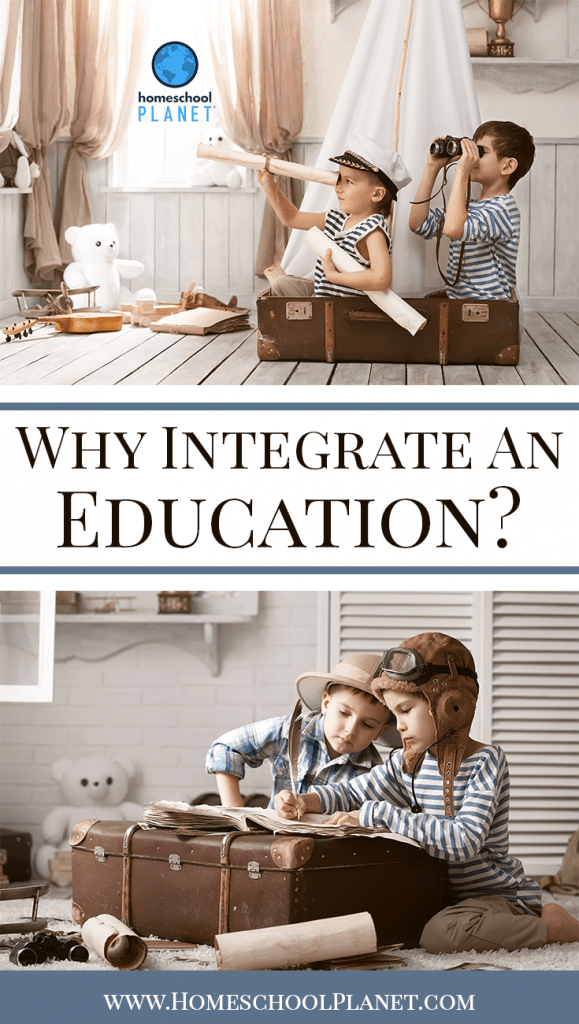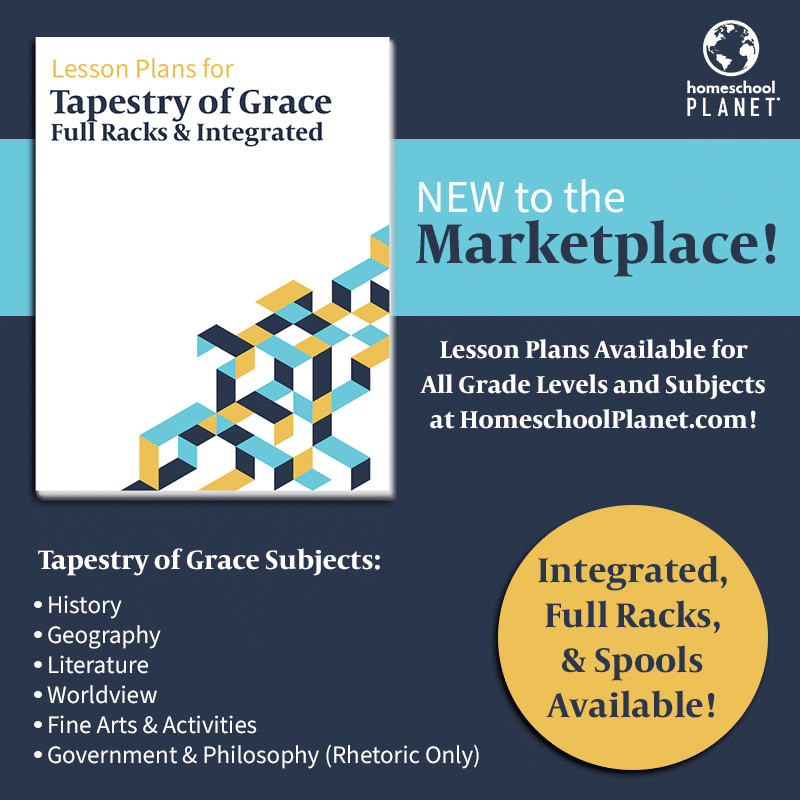Why Integrate An Education?
What Is Integrated Learning?
You may have heard the term “integrated studies,” sometime used interchangeably with “unit studies,” and wondered for what that was all about. Interestingly, the Latin root of “integrated” is “integer,” a word for that might ring faint mathematical bells in your brain. The word means
unity, wholeness, and completeness—traits that many of us long to see in our country right now. “To integrate” is to make up a unity out of different parts, perhaps especially in the sense of bringing outsiders to the inside and making them part of the whole.

In the world of homeschooling, “integrated” or “unit” studies refers to the use of several subjects to achieve a whole immersion into learning. I once asked my mother, who enthusiastically immersed six children in integrated studies, “What made you do it?”
“I did it because it made the most sense to me,” she explained. “I think that is how people learn, and how they fix information in their minds: by integration.”
“What do you mean?”
“Well, take Egypt. You could simply read about it in a history book, couldn’t you?”
I admitted that I could.
“And you could fly over it, which would give you some idea of its geography.”
This, also, I could do.
“But those things would only give you a certain amount of understanding, right? That’s why it isn’t enough for us to read about our favorite places: we want to travel to see them before we die.”
“That’s true…”
“Now, imagine visiting Egypt. Think of standing at Giza in front of the Great Pyramid, the only remaining Great Wonder of the Ancient World. Suppose you are eating Egyptian food, listening to Egyptian music, and reading Egyptian poetry. Imagine feeling the wind across the desert and speaking with people whose ancestors have lived back for thousands of years in that land.”
“Wow,” I breathed.
“There you are,” said my mother. “We were given five senses for a reason. When we approach a thing from many different angles, we deepen our knowledge. We reason better—make better opinions and decisions—because we understand better. For Christians, this also means that we can share the Gospel better.”
Immersion by Integrated Learning
Thus, growing up, my studies were integrated. When we approached a new unit, my mother would pick a historical topic and explore it from every angle. I learned to make Egyptian palace bread—which I recommend only for the sweetest tooth!—and many-colored beaded collars. My little brother and I reenacted “The Tale of the Wicked Hemti” (more elegantly titled The Eloquent Peasant in some Egyptian literature anthologies). I learned the meaning of Ankh (“life”) and Ma’at (“truth”). I tried to listen to Egyptian music, and I pretended to be a corpse so that my little sisters might mummify me in layers of toilet paper. I covered sheets of butcher block paper with imitation tomb paintings. I was astonished by a poem called, “I think I’ll go home and lie very still,” which showed me the playful side of people who have been dead for thousands of years. Out of many parts, a whole experience came together in my fourteen-year-old mind. Even now, twenty four-years later, I remember it so vividly. I was immersed.
Now, like my mother and many another educator before her, I have found that integrated studies “make the most sense to me” as a teacher. “Integration helps to fix knowledge firmly in the mind,” said my mother. I have found it so, and I now draw on that knowledge to help my
students experience other points of view and arrive at a deeper, more complex understanding. Together, we walk an extra mile in the shoes of ghosts, or stand on Boo Radley’s front porch, or carefully handle the fine wires of fear and hope that bind together all this human family.
By immersion, we learn to weep with those who weep, and rejoice with those who rejoice. We learn not to despise those who came before us, but rather to try the wisdom of the ages, keeping that which is good. We learn to see one another—more often than not, the seeing leads to knowing and to loving.
Integrated Education Made More Approachable
Integration often involves extra work, or at least an extra degree of ingenuity. My mother is a little unusual in that she wrote down her plan of integration for her children. It took her twenty years and several thousand pages to show how twelve grades of education in history, literature, geography, writing, worldview, politics, fine arts, and philosophy, might all be integrated together as unit studies. Because of her efforts, I can immerse my own students more easily, and I am grateful! Now, I work to continue her project, hoping to add mathematics, sciences, and economics to the integrated tapestry made up of many threads that she and my father handed to me. When it is finished, I hope it will make up an “integrity”: a wholeness that helps my students to see other humans, to love them, and to share the love of God with them.
Integrated studies offer us a potential wealth of understanding, but they require a little extra work, extra ingenuity, and extra planning. Fortunately, Homeschool Planet’s software can now lighten that load in ways my mother never dreamed of when she first began to write her Tapestry of Grace. I hope the new planners for our curriculum will make it easier than ever to offer your students this precious gift that my mother gave me: an integrated education.
Add Tapestry of Grace Lesson Plans to Your Homeschool Planet Planner
If you are interested in learning more about the Tapestry of Grace curriculum or adding the Tapestry of Grace Lesson Plans to your Homeschool Planet Online Planner, click here to visit the Homeschool Planet Marketplace. There you will find Tapestry of Grace lesson plans are available for all learning levels bundled for your choice of Integrated, Full Racks, or Spools. Integrate your child’s education today with Tapestry of Grace!
Meet Special Guest Author: Christina Somerville



